they/them | scifi, sitcoms, fantasy, dnd, and whatever else strikes my fancy | theoretically writing on ao3 @justabrain
Don't wanna be here? Send us removal request.
Text
Mini Comics: Critical Role - Aeor Adventures page 4
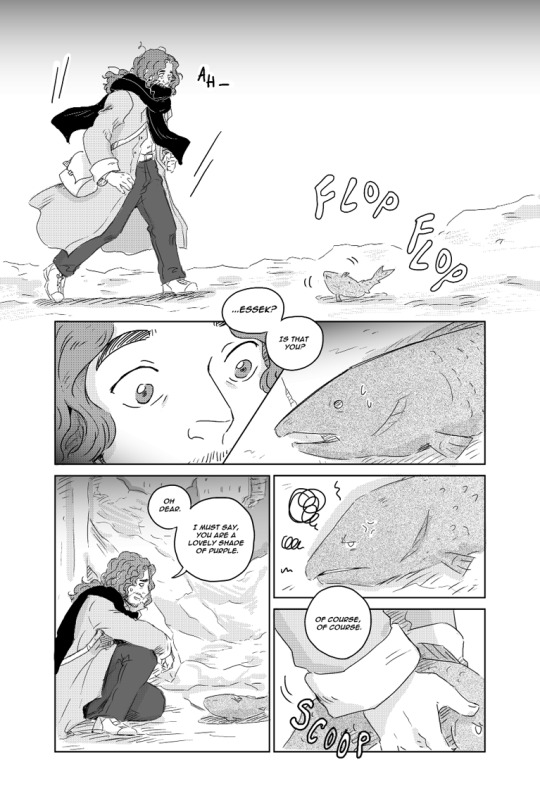
The big reveal! Yup, I'm doing the salmon-Essek in Aeor story, ehehehe XD I thought it'd be a fun little story to try my hand at, and also mess around with my tones ^_^
________________________________________________________
~ Patreon ~ Twitter ~ Kofi ~ Ko-fi store ~ Merch ~ Linktree ~
56 notes
·
View notes
Text
You have just been magically transported into a random ao3 fic!
Spin the wheel of ao3 tags three times to find out what your fic is about. Put in the tags what your fic tags are!
4K notes
·
View notes
Text



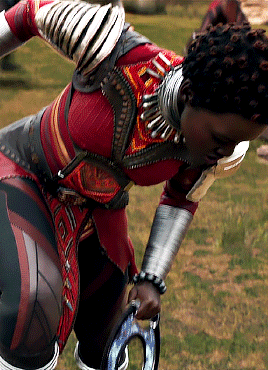


Lupita Nyong'o as Nakia – Black Panther (2018)
5K notes
·
View notes
Text






DAFORGE & GARASHIR PLUSH PREORDER INFO!!
Preorders will start next week, on JULY 1!
224 notes
·
View notes
Text
“Hot and bothered” in the sense that it is 90 degrees out and I am extremely annoyed
101K notes
·
View notes
Text
I just saw a story on AO3 tagged "pet p!ay"
TIK TOK MUST BE STOPPED BEFORE IT DESTROYS LANGUAGE
#this is all true#but at least for ao3#if someone uses a censored version on a fic#a tag wrangler will attach it to the uncensored version and filtering will still work#so thank your local tag wrangler everyone!!#nf
135K notes
·
View notes
Text
This is only half a thought so far, but maybe other people want to chime in.
I’m doing Watch Machina (currently at episode 15) and Nein Again (currently at episode 21) while I also keep up with current Critical Role content (Age of Umbra episode 4) and something that bothers me a little is Matt’s current method of narration.
In C1, Matt’s style is very informal with regard to the narration. There’s little added drama via his tone, pace, or choice of words. “Toothy maw” became a meme pretty quickly, but the point of every description was to efficiently set the scene so the players could start their RP and choose what to do. There wasn’t as much precision with his descriptions, and of course that is a talent that takes a long time to hone when you’re describing lots of different things over the course of several hours. However, the narration was far less formal and calculated than his NPC dialogue, so (in combination with voice acting) it was very easy to determine when Matt was in character or not. It wasn’t a bad thing; Matt’s very casual narration and formal dialogue leading up to the Chroma Conclave’s attack on Emon was excellent because it was so sudden, leading the players and the audience to experience the exact same shock the NPCs would have. It’s not a bad way to narrate. If anything, it made the heartfelt moments so poignant, especially at the end of the campaign. That description of snow caps would not have been nearly as impactful if Matt had narrated that way all the time.
In C2, Matt started getting more descriptive and slowed down his narration to match. As Aabria would put it, he “paints a word picture” and includes more environmental storytelling for the setting itself, not just things for the characters to expressly interact with. I think this is part of what led to the Nein interacting with the set dressing more: Matt mentioned it, so it must be important! This led to some fun hijinks as time went on, and it gave Wildemount a different feeling than Tal’dorei. I couldn’t tell you that Emon had a particular vibe to it other than it being a big city, but howdy do we know that Berleben is full of nosy, bored people in a smelly swamp, and we sure know that Zadash is a bustling city with stark class segregation while Nicodranas is a beautiful trade hub with a mixture of different cultures. I think part of that may have come from working on the source books (they have similar language for the plot hooks and location entries). However, that method of narration was mostly limited to first descriptions of a new place or events (“cutscenes” like the attack in Zadash). Within a scene, Matt was still fairly casual in his discussions with the players.
But currently in Age of Umbra, and with a good chunk of C3, Matt’s narration is far more deliberate. There is a consistently slower pace compared to earlier campaigns, usually only speeding up in combat. Part of that may be for production purposes (easier for transcriptions and closed captioning), but it also impacts the pacing of the game itself. There’s also that presence of a new character: the narrator himself has a voice, and that is now part of the story. It’s extremely noticeable when the cast gets Matt to “break character” as the narrator to only be a DM. It requires a baseline level of formality for that to happen, and Matt committed to it in nearly every scene, regardless of the context of the scene. While that doesn’t feel all that strange for Age of Umbra (it fits well with the soulsborne style of game), it does make me realize that it’s part of why C3 felt incongruous. Like, sorry about the dead horse, but I was expecting C3 to be pulpy, which very much benefits from the narration style of C1 rather than the formal narration style Matt prefers currently. Punchy, informal narration sets a player expectation of “you’re here to get something done and I’ll tell you if it works,” while the current style instead lends itself to “you’re part of my story and this is the tone.” The former is great for fast-paced roleplay and the latter is suited to unhurried storytelling—which wouldn’t feel as mismatched if C3 hadn’t been a story where the PCs needed to prevent a second calamity within the course of a few weeks.
I wouldn’t go so far as to say that this was a mistake. Matt clearly enjoys how he narrates currently, and every DM is entitled to their preference. However, I think there’s a lesson in here that varying the narration style to match the purpose of the scene and story would benefit the players and the audience.
To be fair here, Matt is not the only DM who doesn’t mix it up very often. Brennan Lee Mulligan (Dimension 20) is far closer to the C1 style of fast, informal narration with very limited, specific instances where he would slow down for drama; there is no “narrator” character in his players’ story. D20 has a far more casual tone to its seasons than CR does in its campaigns. Luis Carazo (Tales Unrolled) narrates similarly to Matt, with a focus on instilling an emotional reaction for the players to deal with, and the players collaboratively join Luis as the narrator for their own characters; it’s a back and forth where the DM and players contribute to that additional presence. Tales Unrolled is on the opposite end of the spectrum from D20, with a clear feeling that it is a storytelling experience.
Again, choosing one narration style over another isn’t necessarily a flaw. However, I think varied narration is a tool that most DMs underutilize. If used carefully, adjusting narration styles within sessions on the fly could enhance the experience of an Actual Play campaign for everyone involved. It could be used as a signal to the players for what type of scene this will be or when a scene is shifting. It could also signal to performers in a show for pacing within an episode (hijinks are over, time for some drama; time to cool down from the tension).
But, as always, it’s easier to point stuff out like this than it is to do it in practice.
170 notes
·
View notes
Text
hurdy gurdying or gurdly hurdying? 🤨
37K notes
·
View notes
Text

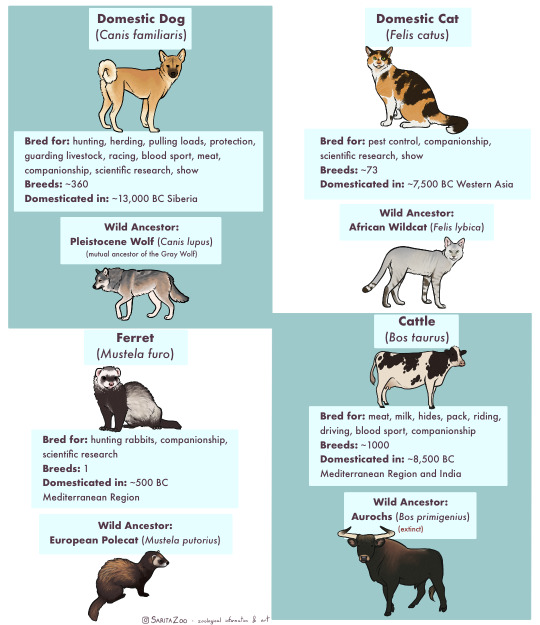


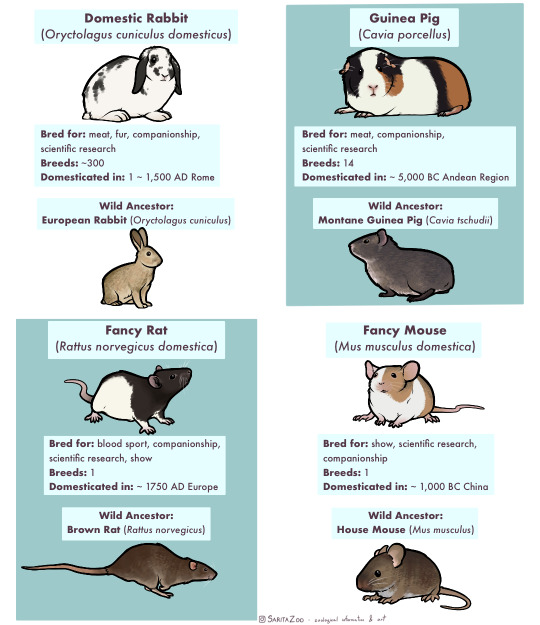
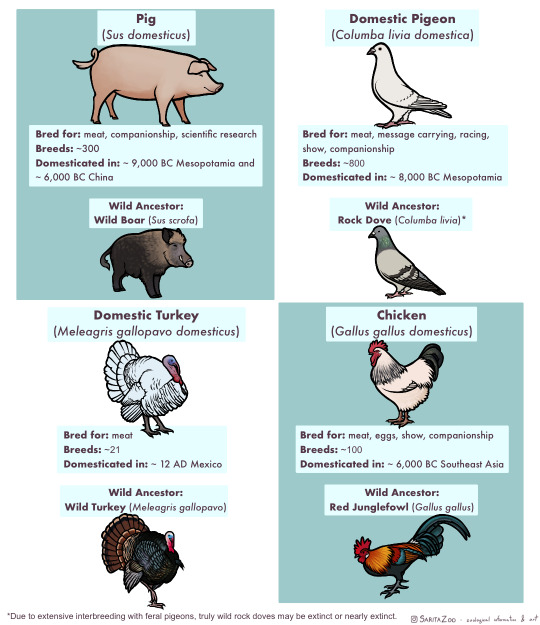
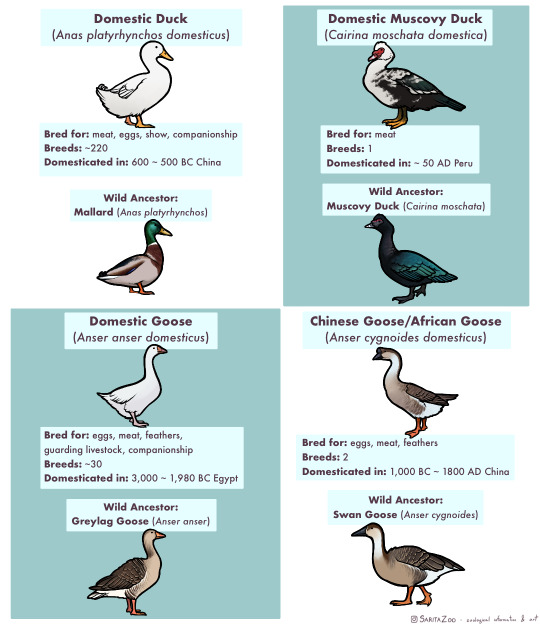
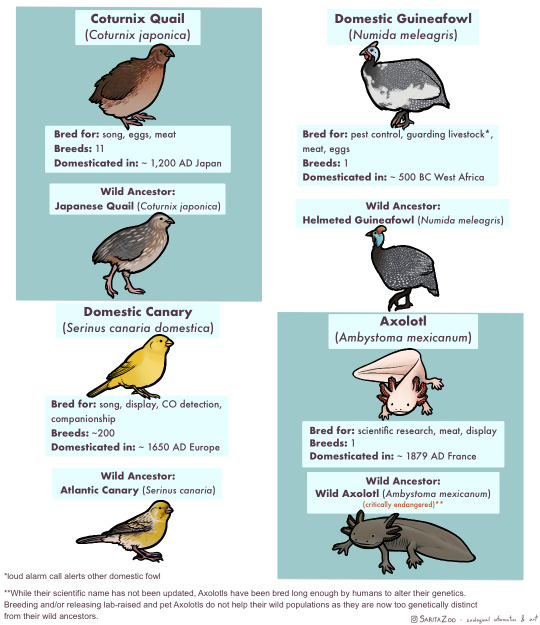
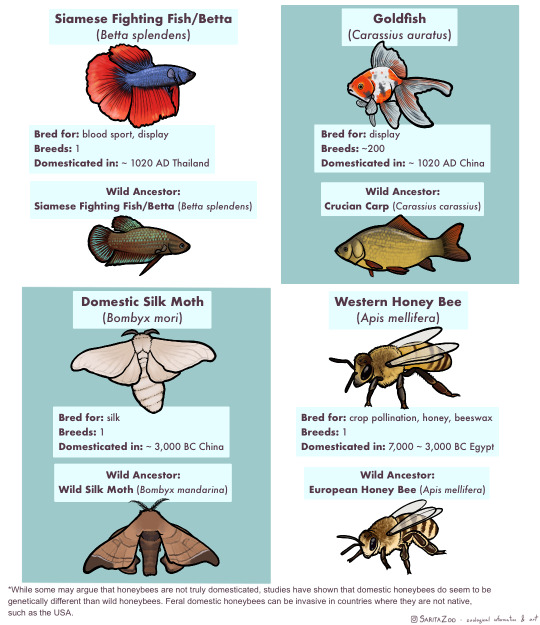

Phew. This one took, uh… a bit longer than expected due to other projects both irl and art-wise, but it’s finally here. The long-awaited domestic animal infographic! Unfortunately, I didn’t have enough space to cover every single domestic animal (I’m so sorry, reindeer and koi, my beloveds) but I tried to include as many of the “major ones” as possible.
I made this chart in response to a lot of the misunderstandings I hear concerning domestic animals, so I hope it’s helpful!
Further information I didn’t have any room to add or expand on:
🐈 “Breed” and “species” are not synonyms! Breeds are specific to domesticated animals. A Bengal Tiger is a species of tiger. A Siamese is a breed of domestic cat.
🐀 Different colors are also not what makes a breed. A breed is determined by having genetics that are unique to that breed. So a “bluenose pitbull” is not a different breed from a “rednose pitbull”, but an American Pitbull Terrier is a different breed from an American Bully! Animals that have been domesticated for longer tend to have more seperate breeds as these differing genetics have had time to develop.
🐕 It takes hundreds of generations for an animal to become domesticated. While the “domesticated fox experiment” had interesting results, there were not enough generations involved for the foxes to become truly domesticated and their differences from wild foxes were more due to epigenetics (heritable traits that do not change the DNA sequence but rather activate or deactivate parts of it; owed to the specific circumstances of its parents’ behavior and environment.)
🐎 Wild animals that are raised in human care are not domesticated, but they can be considered “tamed.” This means that they still have all their wild instincts, but are less inclined to attack or be frightened of humans. A wild animal that lives in the wild but near human settlements and is less afraid of humans is considered “habituated.” Tamed and habituated animals are not any less dangerous than wild animals, and should still be treated with the same respect. Foxes, otters, raccoons, servals, caracals, bush babies, opossums, owls, monkeys, alligators, and other wild animals can be tamed or habituated, but they have not undergone hundreds of generations of domestication, so they are not domesticated animals.
🐄 Also, as seen above, these animals have all been domesticated for a reason, be it food, transport, pest control, or otherwise, at a time when less practical options existed. There is no benefit to domesticating other species in the modern day, so if you’ve got a hankering for keeping a wild animal as a pet, instead try to find the domestic equivalent of that wild animal! There are several dog breeds that look and behave like wolves or foxes, pigeons and chickens can make great pet birds and have hundreds of colorful fancy breeds, rats can be just as intelligent and social as a small monkey (and less expensive and dangerous to boot,) and ferrets are pretty darn close to minks and otters! There’s no need to keep a wolf in a house when our ancestors have already spent 20,000+ years to make them house-compatible.
🐖 This was stated in the infographic, but I feel like I must again reiterate that domestic animals do not belong in the wild, and often become invasive when feral. Their genetics have been specifically altered in such a way that they depend on humans for optimal health. We are their habitat. This is why you only really see feral pigeons in cities, and feral cats around settlements. They are specifically adapted to live with humans, so they stay even when unwanted. However, this does not mean they should live in a way that doesn’t put their health and comfort as a top priority! If we are their world, it is our duty to make it as good as possible. Please research any pet you get before bringing them home!
38K notes
·
View notes
Text
For Pride Month, I would like to throw my very long and pointy green hat in the ring.
[Disclaimer: this is 100% a joke and not a real audition unless you like me, in which case, I am very serious]
7K notes
·
View notes
Text
wlw this, mlm that. well. i'm nblnb (non binary liking nice bugs)
106 notes
·
View notes
Text

Entrance door in Art Nouveau House on Rue du Lac,6. Brussels
Architect:E. Delune 1902 (Photo : Dorka Demeter)
316 notes
·
View notes
Text
Various things that are called some variation of "pepper" in various languages:
"Pepper," seeds of the plant Piper nigrum, a.k.a. black pepper, used as a spice.
"Peppermint," a hybrid of watermint and spearmint.
The edible fruits of the plants of the genus Capsicum, known collectively as "peppers," which includes bell peppers, chili peppers, etc. (some European languages make a distinction between peppers and capsicums by using the word "paprika" for the latter. A word that is a direct cognate with pepper.)
Allspice, also known as "Jamaica pepper," "myrtle pepper," but also as "spice pepper" in Finnish and Swedish (I suppose as opposed to the kind of peppers that aren't used as spices?), the dried fruits of the plant Pimenta dioica. More closely related to myrtle, guava, and eucalyptus than pepper.
Horseradish, a plant of the family Brassicaceae, thus making it a relative of mustard, cabbage, and radish, known in some European languages as "pepper root."
Ginger snaps, biscuits flavored with ginger, known as "pepper cake" in many European languages.
"Sichuan peppers," the dried fruits of the genus Zanthoxylum. Related to neither black peppers nor capsicums, but part of the same family as citrus.
Undoubtedly forgetting at least some but anyway. Forgot why I was doing this.
#what i’m learning is that you can call literally anything a pepper in your worldbuilding#and it doesnt even have to be a plant#nf
9K notes
·
View notes
Text
Is your character good at working with their hands?
#oc copper#ABSOLUTELY i mean that’s kinda their whole thing#runecarver arificer babeyyy#oc erris#and#oc ewyn#i think would surprise themselves with how good they are#nf#oc talk
102 notes
·
View notes
Text
The funny thing is that I can fully see where a lot of very dumb discourse on this site came from but it doesnt make it any less perplexing
"Weight is most often determined by genetics rather than lifestyle choices, and the connection to health is not as black and white as TLC would have you believe": yeah, im with you.
"A person's health is not in any way connected to their worth as a person, and its not any of your business how healthy someone is to begin with, nor is it fair to demand fat people bend over backwards to perform health for you in a way you never ask of skinny people": absolutely. Completely agree with you.
"Saying that vegetables and exercise are good for you is fatphobic": okay what the hell happened here
2K notes
·
View notes
Text
127K notes
·
View notes
